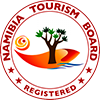1 – KIFARU: Tristan’s mission to save the rhinos
In October last year, with some friends, we went to a lodge built in 2019, which is South of Etosha National Park, called KIFARU LODGE. The lodge is nice, very relaxing and what is quite unusual is that they specialize in rhinoceros.
To be honest, I did not have much affinity for rhinos before, but somehow by the end of the 2 days, I felt some empathy towards these prehistoric animals.
The family story of KIFARU started with Tristan Muller, a 15-year-old schoolboy who was asked at school, to make an oral presentation on any conservation topic.
Tristan chose to talk about breeding white rhinos to help restore their numbers in Namibia and across Africa.
That same day, Tristan’s teacher saw his parents in town and the teacher mentioned how inspiring Tristan’s presentation was.
Tristan ‘s idea was clear: He wanted to start breeding white rhinos in Namibia not just to protect them as they are near extinction, but to actively help their numbers grow.
At the time, his father, Jaco Muller, was planning to develop a game farm. But after hearing Tristan’s idea, the family saw things differently. Tristan’s project had a purpose, and they decided to give it a go.
And to learn more about rhinos breeding, they started by visiting one of the world’s most experienced rhino breeders in the world.
In 2010, they bought their first rhino, followed by a female in 2011.
Jaco was also involved in property development, and when the properties were sold, all the profits were used to buy more rhinos and grow the project. It was a big financial gamble.
Their first calf was born in January 2013.
Since 2010, over 160 white rhino calves have been born on their land of 13,000 hectares. Most have stayed in Namibia, while others were sent to places like Angola, the DRC, and Texas—places with similar climates to Namibia, and where the animals can live and breed in safety.
Today KIFARU is the largest breeder of white rhino in Namibia.
The project came with many challenges. Keeping rhinos safe is expensive. They use gyrocopters, drones, motorbikes, etc.
The rhinos need constant care, including vaccinations and dehorning, which helps protect them from poachers.
Dehorning is a procedure of trimming the horns to reduce the rhinos’ value to poachers and there is apparently decreased rhino mortality as they are less attractive to poaching.
Dehorning one rhino costs about USD 1,000. (the horns grow again after a long time) A full-time veterinarian is needed.
As you probably know a rhino horn is highly prized, especially in parts of Asia and also the Middle East. They believe that rhino horn cures diseases, treats fever or cancer, acts as an aphrodisiac or detoxifier and it can also be a status symbol of wealth.
A dead rhino for its horn is worth as much or more than a rhino alive!!
The average cost of a rhino is about US$200,000.
This makes a rhino horn more valuable than gold, diamonds, or cocaine, which fuels organized crime and corruption.
Feeding is another major cost, especially during droughts. The family was fortunate to have access to underground water and gradually increased their irrigated land from 7.5 to 20 hectares, allowing them to grow feed even in very dry years like in 2019 and 2024.
To take care or rhinos requires a lot of work and a need for awareness to protect this endangered species.
The family decided to register a non profit organization called the Rhino Momma Project. It aims to protect and repopulate white rhinos population in Namibia through breeding, anti-poaching efforts, and community support.
Perhaps, if you or someone in your family and friends would like to volunteer, here is the link: https://rhinomomma.com/the-rhino-momma-volunteer-handbook










